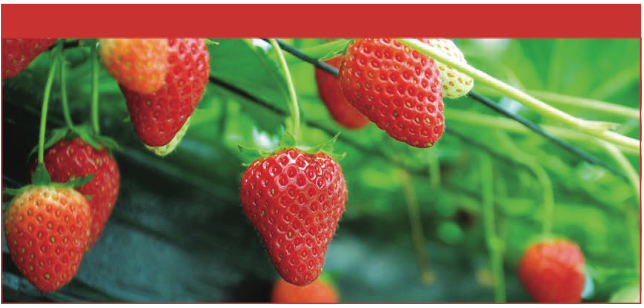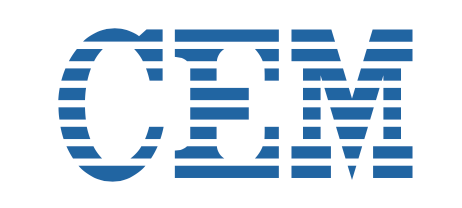CEM - Rapid, Automated Extraction of Pesticides from a Strawberry CRM
The QuEChERS method has become the industry standard for pesticide clean-up and extraction of a wide variety of food samples. Unfortunately, this process is a manual, multistep process that can be time consuming and fraught with error. Furthermore, there are so many different QuEChERS kits for various food types that it can be overwhelming to determine which kit is best for any given sample.
In this application note, we discuss the use of the EDGE® automated extraction system with Q-MatrixTM Hydra, a sorbent that performs the cleanup of wet and dry food samples. The EDGE had the same recovery as traditional QuEChERS methodology, but in an automated platform that includes sample rinsing, filtration, and system washing.
Introduction
As consumers, we want to know what is in our food that could be harmful, including pesticides, fillers, and anything that could be leached from packaging. As manufacturers, we need to ensure that our products are safe and fall within allowable limits of contaminants. Pesticide analysis is of particular interest, because the long-term effects of pesticide exposure are well documented. While pesticide testing is already very routine with QuEChERS methodology, there is room for improvement. Achieving a more complete extraction in less time, in an automated fashion, has been a request of food manufacturers for years. As limits of detection continue to drop and the need to shorten turnaround time for batch release becomes more urgent, a faster, more efficient extraction method is necessary.
In this experiment, the techniques of QuEChERS and EDGE automated solvent extraction are compared. QuEChERS utilizes salts and sorbents in a multi-step manual clean-up and extraction process. With QuEChERS, the total time to extract one sample is between 20 and 60 min. The EDGE automated solvent extraction system performs sample extraction and clean-up in a single, 7–8 min cycle that includes sample rinsing, filtration, and system washing. The use of Q-Matrix Hydra further simplifies the extraction process by removing water from wet samples in-situ, so that no additional handling of the sample is required.
Materials and Methods
Reagents
Strawberry CRM (T19253QCSale) was purchased from FAPAS. Q-Matrix Hydra is a product of CEM Corporation. Sodium acetate, magnesium sulfate, and primary secondary amine were purchased in bulk from Silicycle. Samples were extracted via the EDGE or QuEChERS method. Acetonitrile with 1% acetic acid was used as the extraction, rinse, and wash solvent.
QuEChERS Method
We weighed 10 g of strawberry CRM into a 50 mL centrifuge tube. We then added 10 mL of acetonitrile with 1% acetic acid to the tube and vortexed for 1 min on a VWR Analog Vortex Mixer. We added 1.5 g of sodium acetate and 6 g of magnesium sulfate to the tube, which was capped and shaken for 1 min and entrifuged at 6000 rpm for 5 min in a Thermo CL2 Centrifuge.
We added 1 mL of the acetonitrile layer to a 20-mL centrifuge tube containing 150 mg of magnesium sulfate and 50 mg of primary secondary amine. The tubes were shaken for 1 min and centrifuged at 6000 rpm for 5 min. The supernatant was transferred to a vial for analysis. All samples and blanks were prepared in triplicate.
EDGE Method
We weighed 2.5 g Q-Matrix Hydra and 5 or 10 g of strawberry CRM into an assembled Q-Cup® containing a C9 + G1 + C9 Q-Disc® sandwich. The Q-Cups were placed in the EDGE removable rack with a 40 mL glass collection vial and the rack was slid into position on the EDGE. The EDGE was programmed with either the standard Pesticide Residues method for the 5 g sample or the modified Pesticide Residues method, which includes agitation and multiple rinses to increase analyte recovery, for the 10 g sample. The extract was transferred to an Organomation N- EVAP® III Nitrogen Evaporator for evaporation to <5 mL. Extracts were then diluted to 5 mL with acetonitrile with 1% acetic acid. All samples and blanks were prepared in triplicate. The extracts were transferred to vials for analysis.
EDGE Method: Pesticide Residues of 5 g Sample
Q-Disc: C9 + G1 + C9
Sample Size: 5 g
Extraction Solvent: 1% Acetic Acid in Acetonitrile
Top Add: 15 mL
Bottom Add: 10 mL
Rinse: 5 mL
Temperature: 40 oC
Hold Time: 3 min
System Wash: 20 mL 1% Acetic Acid in Acetonitrile

EDGE Method: Pesticide Residues of 10 g Sample
Q-Disc: C9 + G1 + C9
Sample Size: 10 g
Extraction Solvent: 1% Acetic Acid in Acetonitrile
Top Add: 10 mL
Bottom Add: 5 mL
Agitation: 1 min
Rinse: 1: 5 mL
Rinse: 2: 10 mL
Temperature: 40 oC
Hold Time: 2 min
System Wash: 10 mL 1% Acetic Acid in Acetonitrile
Wash Temperature: 40 oC
Wash Hold Time: 3 s
Analysis
Next, 2 μL of each extract was injected into a Waters Acquity UPLC system with a Xevo TQD triple quadrupole mass spectrometer with a Restek ARC-18, 2.7 μm, 100 x 2.1 mm column with a flow of 0.4 mL/ min. An elution program with a 7-min ramp from 95% A (water w/ 10 mM ammonium acetate and 0.2% formic acid) and 5% B (methanol w/ 10 mM ammonium acetate and 0.2% formic acid) to 100% B was programmed. MRM transitions were used for quantification for each pesticide. Each sample was analyzed in triplicate.
Results
The EDGE efficiently extracted the pesticides from the strawberry CRM in 7-8 min, including filtration, cooling, and system washing. Table I shows the EDGE and QuEChERS recovery data of multiple pesticides from the strawberry CRM. Comparable recoveries were obtained between the EDGE and QuEChERS extractions. It is important to note that the QuEChERS method was developed for matrices such as strawberries, so good recovery values should be expected. The ability of the EDGE to match the efficiency of the QuEChERS method for a standard matrix, such as strawberries, validates that it can be a suitable alternative method. Since the QuEChERS method is a tedious manual process, the EDGE offers the benefit of a simplified automated extraction with comparable recoveries.

Conclusion
The extraction process used on the EDGE automated extraction system allowed for a strawberry certified reference materials (CRM) to be extracted efficiently in a single step. With one automated method, pesticides were efficiently extracted, comparable to the traditional QuEChERS process. The addition of agitation on the EDGE allowed for extraction of a larger sample and use of less solvent than when agitation is not used. The increase in sample size gives greater confidence in sample homogeneity with respect to the total batch sampled. A 20% solvent savings is realized by the addition of agitation. Furthermore, a minimum of 60% time savings was realized when compared to the QuEChERS method. This time savings leads to increased sample throughput and overall laboratory productivity.
In this study, a wet food sample of strawberry CRM was the focus; however, the same method would be applicable for all food samples, wet and dry, and a wide range of pesticides. Some pesticides are known to be heat-labile. For samples where temperature is a concern, a room temperature extraction can be performed on the EDGE. The EDGE, with its efficient pesticide extraction method, is ideal for testing laboratories that want repeatable results for all food samples using one simple automated method.

CEM Corporation
P.O. Box 200, Matthews, NC 28106
tel: (704) 821-7015, (800) 726-3331
Website: www.cem.com










